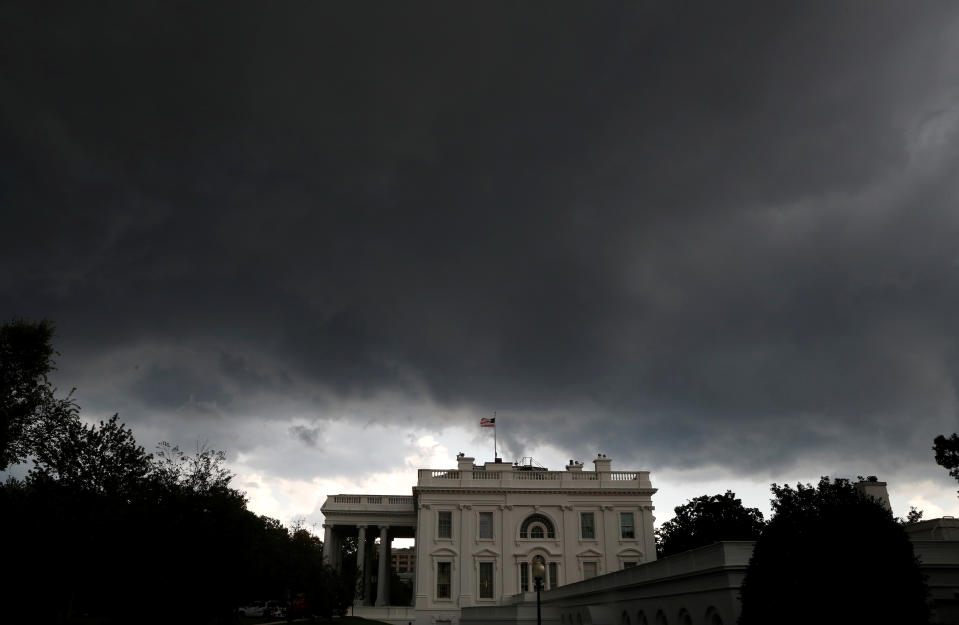Negative rates in the US is 'no longer absurd to think,' PIMCO says
Negative yields could be coming to the U.S. Treasury market during the next downturn. Or so says PIMCO’s Joachim Fels.
In a post on PIMCO’s blog published Wednesday, Fels, the firm’s global economic advisor, writes that, “It is no longer absurd to think that the nominal yield on U.S. Treasury securities could go negative.”
“Around $14 trillion of outstanding bonds worldwide, or 25% of the market, now trade at negative yields, according to Bloomberg,” Fels adds.
“What was once viewed as a short-term aberration – that creditors are paying debtors for taking their money – has already become commonplace in developed markets outside of the U.S.
“Whenever the world economy next goes into hibernation, U.S. Treasuries – which many investors view as the ultimate ‘safe haven’ apart from gold – may be no exception to the negative yield phenomenon. And if trade tensions keep escalating, bond markets may move in that direction faster than many investors think.” (Emphasis added.)
Since 2014, the European Central Bank has had as part of its benchmark policy setting a negative interest rate on its deposit facility. For years now trillions of dollars worth of government debt in the eurozone has traded with an effective negative yield. And in 2016, former Federal Reserve chair Janet Yellen said she would not rule out the use of negative interest rates in the U.S. during a future downturn.
On Wednesday, the yield on the U.S. 10-year Treasury note fell to 1.595%, the lowest since October 2016 as investors flock to safe assets amid a decline in risk assets as trade tensions flare around the globe.
And the decline in interest rates has been particularly pronounced over the last few weeks of trading, as the Federal Reserve’s move to cut its benchmark interest rate for the first time since 2008 has pressured yields across the globe and prompted at least three other central banks to lower their own benchmark settings.

In Fels’ view, however, the proliferation of negative rates and negative yielding fixed income assets is not entirely an outgrowth of central bank policy, but also the result of demographic and technological factors pushing down rates.
“Rising life expectancy increases desired saving while new technologies are capital-saving and are becoming cheaper – and thus reduce ex ante demand for investment,” Fels writes. “The resulting savings glut tends to push the ‘natural’ rate of interest lower and lower.”
The disinflationary impact of technology is something that many economists and policymakers have argued is keeping a lid on inflation and, in turn, interest rates. Federal Reserve chair Jerome Powell, for instance, said in May that, “Today’s inflation dynamics are very different from even 25 years ago. Globalization and technology may be playing a role.”
Longer life expectancy, in Fels’ view, also contributes to lower inflation as longer-living savers have a “negative time preference,” meaning they prepare for future, rather than present, consumption. And all else equal, fewer people spending less money in the present will keep prices flat or falling as demand does not pressure supply.
“Once upon a time, economic theory maintained that people always value today’s consumption more than tomorrow’s consumption – and thus display positive time preference,” Fels writes.
“People would therefore always demand compensation in the form of a positive interest rate in order to forgo current consumption and save for the future instead. People were viewed as impatient, and the more impatient people are, the higher the interest rate has to be to make them save.”
But this is not the world we live in now.
And while many market participants are downright offended by the notion of negative interest rates, Bloomberg editor Joe Weisenthal has in recent weeks tried to popularize the idea that being compensated for storing your money in a safe asset like a Treasury bond is an aberration.
And PIMCO — with its over $1.8 trillion in assets under management — now appears to agree.
—
Myles Udland is a reporter and anchor at Yahoo Finance. Follow him on Twitter @MylesUdland
Read the latest financial and business news from Yahoo Finance
Follow Yahoo Finance on Twitter, Facebook, Instagram, Flipboard, SmartNews, LinkedIn, YouTube, and reddit.

 Yahoo Finance
Yahoo Finance 
